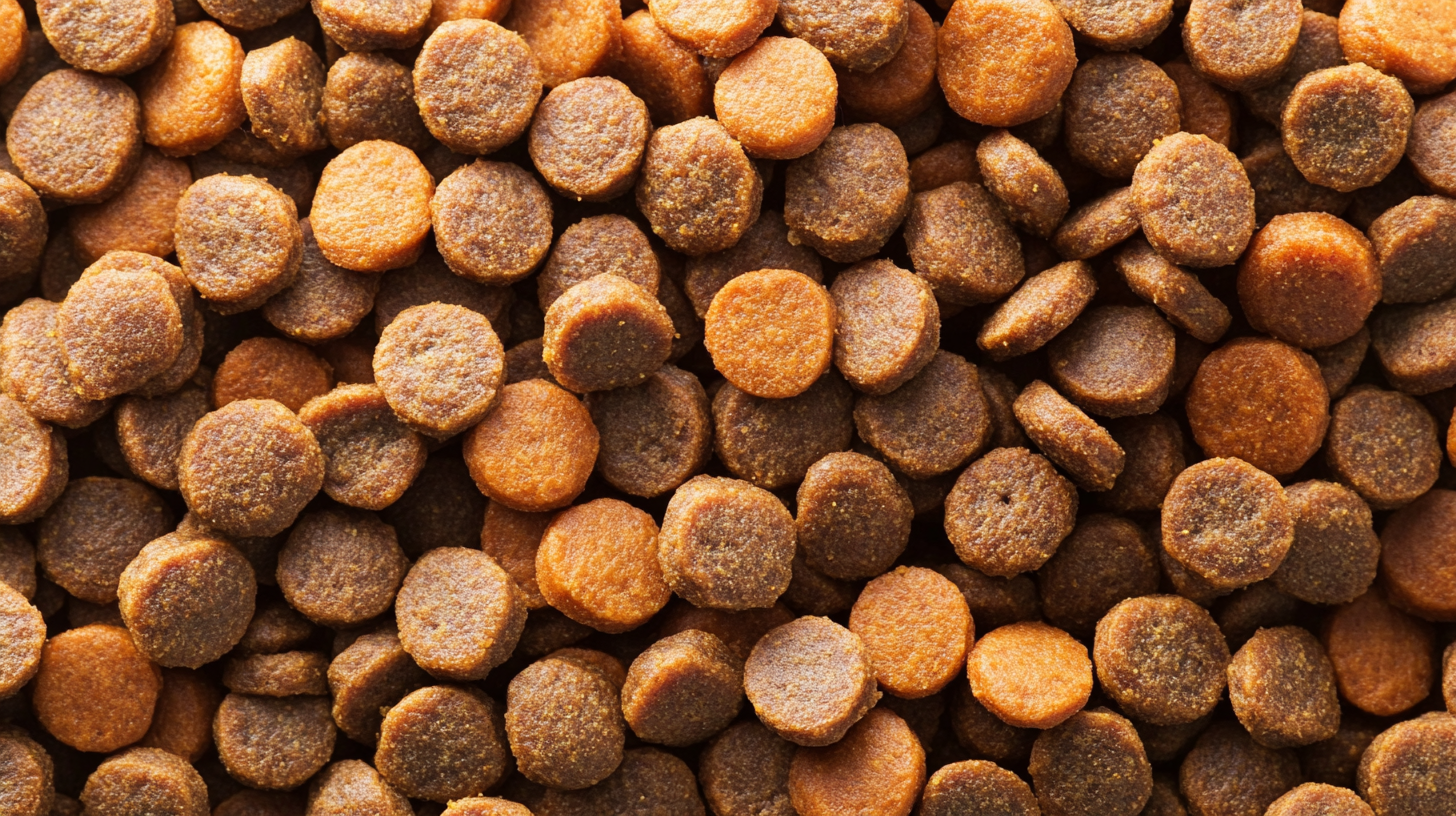Choosing the right diet for your dog is essential for their overall health and well-being, especially for those who may suffer from food allergies or sensitivities. Hypoallergenic Wet Dog Food presents a viable solution for pet owners looking to minimize the risk of allergic reactions. According to a report by the American Kennel Club, approximately 10% of dogs experience food allergies, which can manifest through a variety of symptoms such as itching, gastrointestinal issues, and chronic ear infections. This highlights the importance of selecting a suitable diet that caters to the specific needs of your pet, ensuring that they receive the right nutrition without triggering adverse reactions.
When searching for the best Hypoallergenic Wet Dog Food, it's crucial to consider various factors such as ingredient sourcing, protein sources, and potential allergens. A study published in the Journal of Veterinary Internal Medicine found that diets formulated with novel proteins and limited ingredients significantly reduce allergic reactions in sensitive dogs. By prioritizing these elements, pet owners can find a wet food option that not only supports their dog's dietary restrictions but also promotes a balanced and nutritious meal. Understanding these dynamics will empower pet owners to make informed decisions, providing their furry friends with the healthy diet they deserve.

Understanding hypoallergenic dog food is essential for any pet owner dealing with canine allergies. Hypoallergenic dog food is specifically formulated to reduce the risk of allergic reactions, making it an excellent choice for dogs with sensitive stomachs or skin issues. These diets typically contain limited ingredients, reducing exposure to common allergens such as beef, dairy, and wheat. Instead, they often use alternative protein sources like fish or venison, alongside easily digestible carbohydrates like sweet potatoes or brown rice. This focus on specific ingredients helps to identify and eliminate potential triggers for allergic reactions in pets. The benefits of hypoallergenic dog food extend beyond just managing allergies. Many of these formulations include beneficial nutrients that support overall health, such as omega fatty acids, which contribute to a shiny coat and healthy skin. Additionally, the elimination of fillers and artificial additives is another significant advantage, as these ingredients can further irritate a dog's digestive system or lead to other health issues. Veterinarians highly recommend hypoallergenic diets not only for dogs with diagnosed allergies but also for pets that experience digestive upset or skin irritations without a clear cause. This tailored approach to nutrition can lead to improved well-being and quality of life for dogs prone to various sensitivities.

When selecting hypoallergenic wet dog food, the first step is to identify common allergens found in dog food ingredients. Many dogs develop sensitivities or allergies to certain components in their diet, which can lead to discomfort and health issues. The most frequently encountered allergens include proteins such as beef, chicken, lamb, and dairy. These ingredients are often present in standard dog foods, making it essential to scrutinize the labels carefully.
Grains, particularly wheat, corn, and soy, are also notorious for causing allergic reactions in some dogs. While grains can be a valuable energy source, they may trigger sensitivities in those with grain allergies. Therefore, opting for grain-free formulas can benefit dogs that exhibit symptoms like itching, gastrointestinal distress, or skin problems. Additionally, fish and certain forms of vegetables like potatoes can be less likely to provoke allergies, making them suitable alternatives in hypoallergenic diets.
It's crucial to consult with a veterinarian to identify your pet’s specific allergens. A food elimination trial might be suggested to pinpoint which ingredients are causing adverse reactions in your dog. Once you understand your pet's sensitivities, you can make more informed choices when selecting hypoallergenic wet dog food, ensuring it meets their needs while promoting their overall well-being.

When selecting hypoallergenic wet dog food, several key factors must be taken into consideration to ensure you choose the best option for your pet. According to the American Kennel Club, approximately 10% of dogs suffer from food allergies, making it essential for pet owners to be well-informed. One critical consideration is the protein source. Many hypoallergenic formulas utilize novel proteins, such as venison or duck, which are less likely to trigger allergic reactions. In fact, a study published in the Journal of Veterinary Internal Medicine indicated that over 65% of dogs with food allergies improved when switched to such novel protein diets.
Additionally, ingredient quality should be a top priority. Look for products that contain limited ingredients and avoid common allergens, such as wheat, soy, and corn. The Association of American Feed Control Officials (AAFCO) recommends that pet foods should meet specific nutritional standards, ensuring that what you feed your dog is not only safe but also nutritionally well-rounded. Moreover, opting for brands that provide transparency about their ingredient sourcing is vital. A 2022 report by the Pet Food Institute highlighted that 75% of pet owners consider ingredient traceability essential in their decision-making process.
Lastly, consult with your veterinarian before making any dietary changes. Professional guidance can help you identify any specific allergens affecting your dog, as well as tailor the dog food to meet their individual health needs. With the right information and resources, you can navigate the options available and choose the best hypoallergenic wet dog food for your furry friend.

When it comes to selecting hypoallergenic wet dog food for your pet, the market can be overwhelming with numerous brands claiming to offer high-quality options. It’s essential for pet owners to focus on brands that prioritize not only hypoallergenic ingredients but also nutritional value. Some top brands in this category, such as Hill’s Science Diet and Royal Canin, offer specially formulated recipes that cater to dogs with specific sensitivities, ensuring that your furry friend gets the nourishment they need without risking allergic reactions.
Another noteworthy brand is Blue Buffalo, which has a reputation for using high-quality, natural ingredients. Their Freedom line features wet dog food that is grain-free and free from common allergens like chicken or beef, making it an excellent choice for pets with food sensitivities. Additionally, Wellness CORE provides a variety of hypoallergenic wet food options that focus on protein-rich ingredients, promoting a healthy and balanced diet for your dog. Looking into these brands, it’s crucial to read the ingredient lists and consult with your veterinarian to ensure you choose a product tailored to your pet’s unique dietary needs.
Lastly, consider brands like Nutro and Merrick, which are gaining popularity for their commitment to transparency and quality. Both brands offer grain-free and limited ingredient options, which can help in managing allergies effectively. By focusing on reputable brands that prioritize hypoallergenic formulations, you can give your pet a nourishing diet that caters to their individual needs, enhancing their overall health and wellbeing.
Transitioning your dog to a new hypoallergenic diet can be a delicate process, but it is essential for managing food sensitivities or allergies that may be affecting their health. According to a study published in the Journal of Veterinary Internal Medicine, approximately 10% of dogs are prone to food allergies, often showing symptoms such as itching, gastrointestinal upset, or chronic ear infections. To effectively make this dietary change, it is crucial to do so gradually over a period of 7 to 10 days.
Start by mixing increasing amounts of the new hypoallergenic wet dog food with your pet's current food. This gradual transition helps to prevent gastrointestinal distress, as sudden dietary changes can cause stomach upset. A common guideline is to begin with 25% of the new food combined with 75% of the old food for the first few days. As your dog adjusts, slowly increase the portion of the new food while decreasing the old food until you reach a complete transition.
Monitoring your dog's response to the new food is vital during this period. Veterinary nutritionists often recommend keeping a journal to track any changes in behavior, stool quality, or any allergic symptoms that may arise. If you notice persistent issues or adverse reactions, consulting with your veterinarian is critical, as they can help determine whether the hypoallergenic diet is appropriate for your dog's specific needs. With careful planning and observation, making the switch to hypoallergenic wet dog food can be a smooth process that promotes the overall well-being of your four-legged companion.
